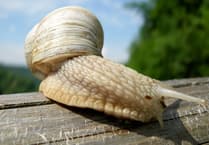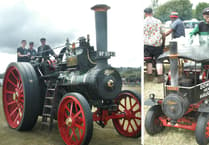THE 219-YEAR-OLD shipwreck of a boat captained by the brother of Romantic poet and Wye Valley visitor William Wordsworth has been given protected status.
The ‘Earl of Abergavenny’ East India Company ship sank off the coast of Weymouth with 250 passengers and crew, including captain John Wordsworth Jnr, and a cargo of silver and china worth £7.5m in today’s money.
The disaster had a profound effect on William Wordsworth, who famously penned We Are Seven after seeing a young girl at Goodrich Castle and Lines Written a Few Miles Above Tintern Abbey.
And a new Portland Museum digital project, funded with £60,000 of Lottery money, tells its story.
The ship was launched in 1796 in Northfleet, Kent and is rare as it was one of only 36 ships of 1,460 tons that formed a special class of the company’s merchant fleet.
The ship was an early example of the changing technologies in ship building of the time, incorporating the use of iron in its construction, and was named after Henry Nevill, the second Earl of Abergavenny and briefly MP for Monmouthshire in the 1780s before vacating the seat to succeed his father.
The Earl of Abergavenny’s first voyage left Portsmouth on March 18, 1797 and sailed under the captaincy of John Wordsworth Snr, to Bombay and by November it had reached Malacca and was recorded as arriving in Whampoa in January 8, 1798.
On the ship’s return leg, it crossed the ‘Second Bar’ a landmark and anchorage point in Guangdong in China.
The Wordsworth family had a close association with the East India Company and John Wordsworth Jnr embarked on a life at sea to help support the writing career of his brother, who also penned We Are Seven after seeing a young girl at Goodrich Castle overlooking the Wye.
John captained two successful voyages on the Earl of Abergavenny to China but lost his life along with 250 crewmen and passengers on his fifth trading voyage from Portsmouth to Bengal and China on February 5, 1805.
This was due to a combination of human error.and stormy weather, After striking the Shambles sandbank Cpt Wordsworth managed to free the Earl of Abergavenny, but it sank soon after while he attempted to sail her onto the beach.
Around 100 people survived, but Cpt Wordsworth Jnr stayed at his post and went down with the ship.
The sinking of the ship – which was featured in the Channel 4 series Wreck Detectives – was classified as a major disaster not just because of the number of lives that were lost, but the ship’s cargo was estimated to be valued at £200,000, which included porcelain and 62 chests of silver dollars worth £70,000.
The shipwreck has been scheduled by the Department for Culture, Media and Sport on the advice of Historic England. This means divers can dive the wreck but must leave its contents in situ.
In September 1812 the ship was blown up under water to prevent it from forming a dangerous shoal.
Today, the site includes planking, frames and fixtures and fittings such as a chain pump and iron knees, which are brackets in the structure of a wooden ship.
Duncan Wilson, chief executive of Historic England, said: “This wreck has an evocative story to tell about the life and sorrow of one of our most renowned poets, William Wordsworth.
“But it also has an important place in this country’s shared maritime history and how the East India Company’s fleet made its impact across so much of the world.”
Many of the artefacts from the wreck site are housed at the Portland Museum.
Museum co-ordinator Chloe Taylor said: “The waters that surround the Isle of Portland are renowned for being treacherous.
“Many ships have fallen victim to the unrelenting waves, frozen in time with their stories untold.”





Comments
This article has no comments yet. Be the first to leave a comment.